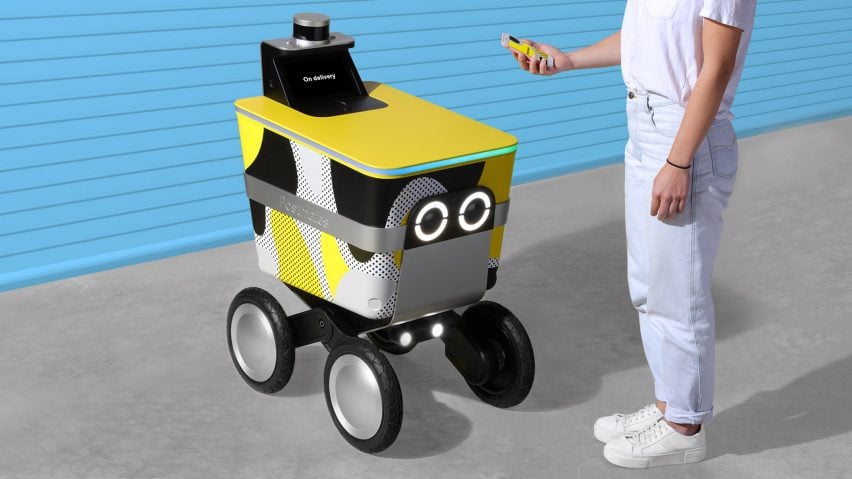
Postmates' delivery robot Serve is designed to be "lovable at first sight"
New Deal Design has collaborated with Postmates, to give the "on-demand anything" delivery company an autonomous rover capable of charming the pedestrians it shares the pavement with.
The wheeled Serve robot will dispatch takeaway food, groceries and other items for Postmates, starting in Los Angeles and then rolling out to other US cities where the company operates.
With a colourful exterior and two big "eyes" that communicate its intentions, the rover has an animated appearance that is designed as much for the benefit of passers-by as for the customers it is directly serving.
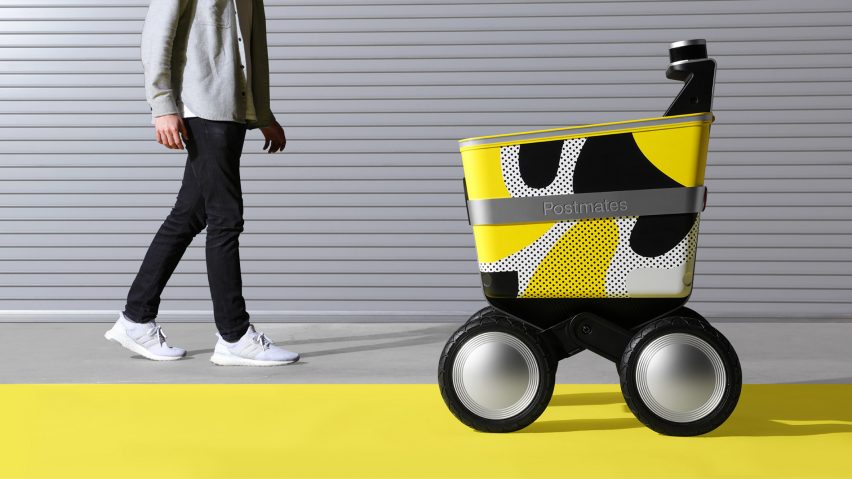
San Francisco-based New Deal Design (NDD) – known for the Fitbit, among other tech products – worked closely with Postmates to come up with a design that would be a "positive presence" on the sidewalk.
"Serve was meant to be loved and accepted into our urban environment with minimal friction," New Deal Design founder Gadi Amit told Dezeen.
"In general, robots are behaving in ways people are not accustomed to," said Amit. "They are also encroaching on personal and public spaces and disrupting societal norms, such as giving right of way on sidewalks and so on."
"Against such a backdrop, we aimed to defuse valid concerns and anxieties by making Serve lovable at first sight."
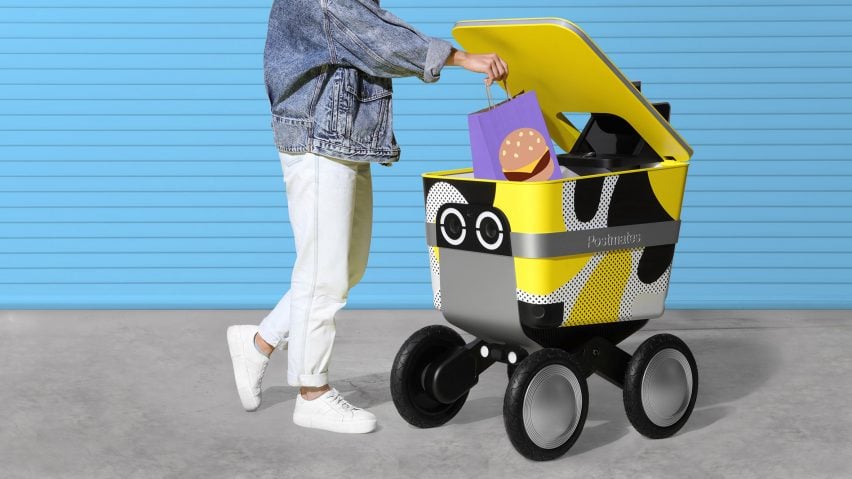
Serve's lovability comes from a combination of product design and interaction design. It has an anthropomorphised appearance, with two "eyes" in front hinting at a face.
These eyes serve multiple functions. First, they are cameras through which the rover effectively does "see".
Second, as with a googly-eyed Jaguar Land Rover prototype car tested last year, they give the robot one way to communicate with pedestrians. In this case, rings of light around the camera lenses indicate the direction of Serve's movement.
This is part of a rover-human "language" developed by NDD and Postmates to enable easy and relatively intuitive interaction.
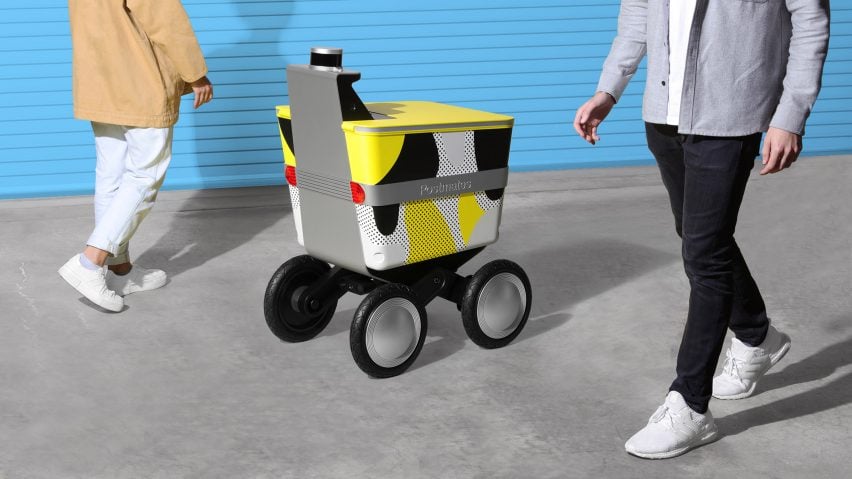
Further insight into the rover's "state of mind" comes courtesy of another halo of LEDs around its top. These light up in different ways if Serve is, for example, waiting for something or about to start moving.
NDD embraced an overtly cute design for Serve after observing that earlier delivery robot and drone prototypes were "not delivering on the emotional connection with humans".
They also drew lessons from the two robots at the heart of 2008 Pixar movie WALL-E.
"The movie WALL-E was discussed, especially the contrast between EVE and WALL-E," Amit told Dezeen. "We saw a trend towards designs that took the 'spaceship' mono-form approach, somewhat similar to EVE."
"We opted for the opposite – the more 'mechanical', less monolith approach of WALL-E."
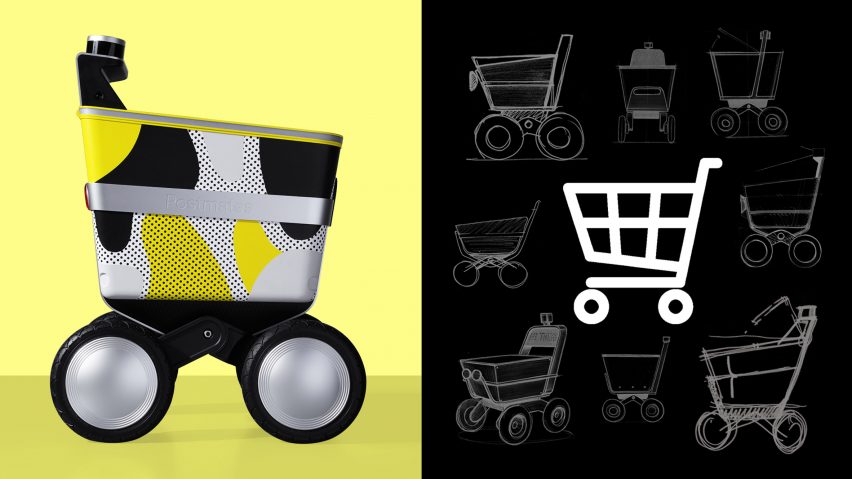
Serve's basic shape is borrowed from shopping carts, chosen for their association with e-commerce, and rendered in rotational-moulded plastic with a bent aluminium chassis.
The colourful finish is a vinyl wrap, or "skin", designed to be customised for different cities or neighbourhoods to amp up the local connection.
A touchscreen on top of the rover allows customers to directly interact with it or to call up the customer service centre if they wish to speak to a person.
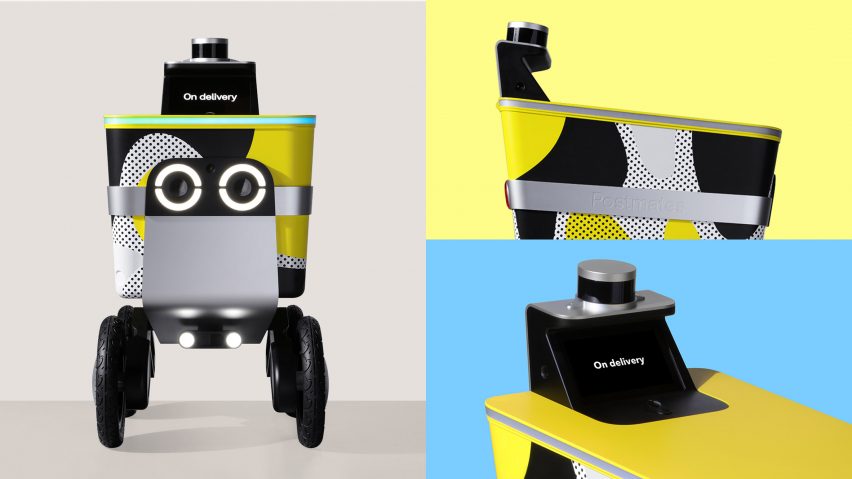
NDD and Postmates promise "socially aware navigation" for Serve, calling on a range of sensors including Velodyne lidar and an Nvidia Xavier processor.
Postmates has also said it will work with local governments to develop frameworks for operating the rovers while respecting pedestrians' right of way. It expects to launch the rover in several key cities in the US over the next year.
Serve is the latest in a growing subset of sensitive robots focused on better communication, including a prototype from Cornell University that gets goosebumps and Madeline Gannon's industrial robots that convey meaning through posture and body language.